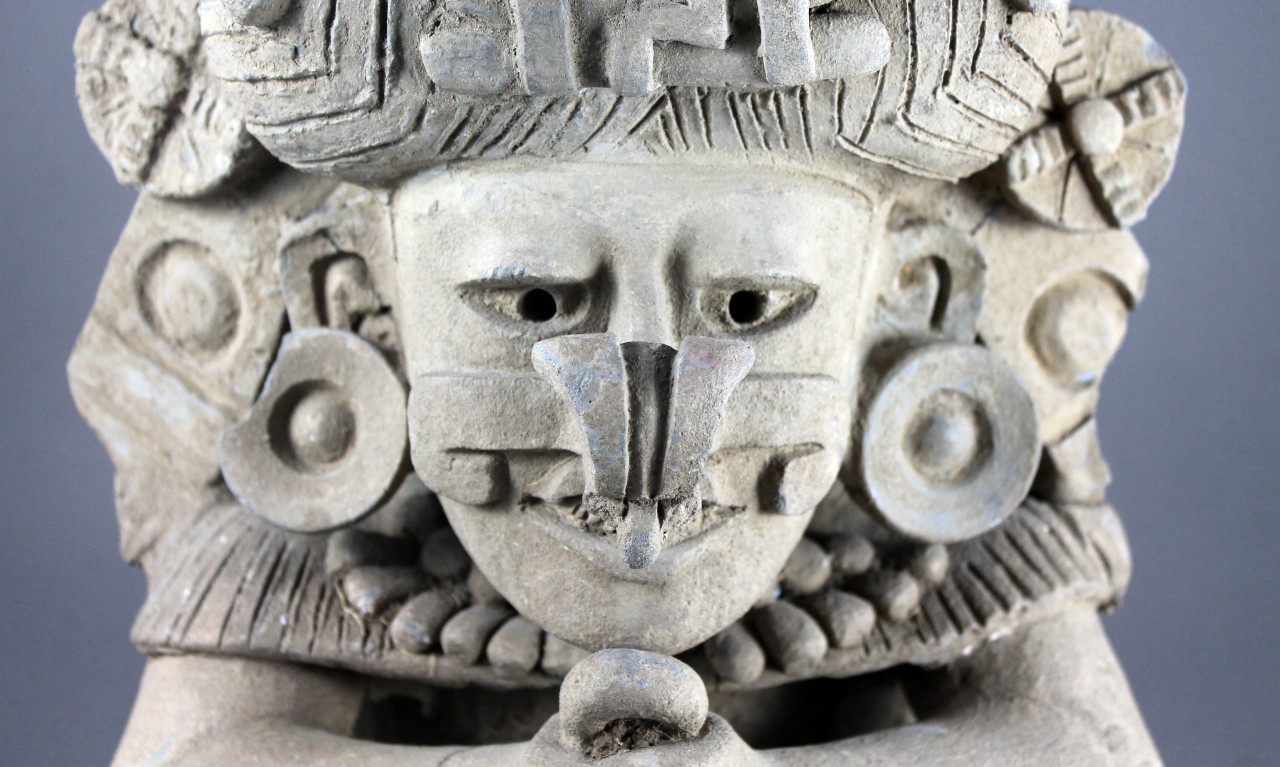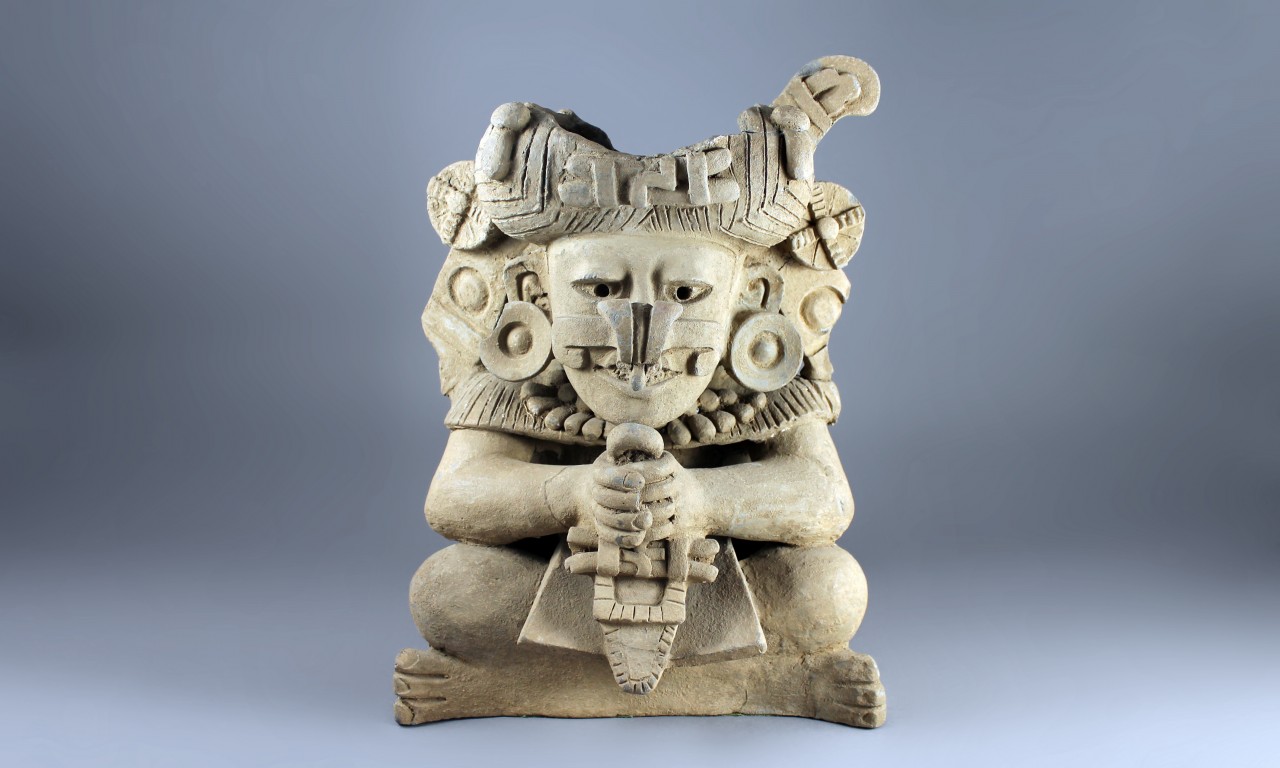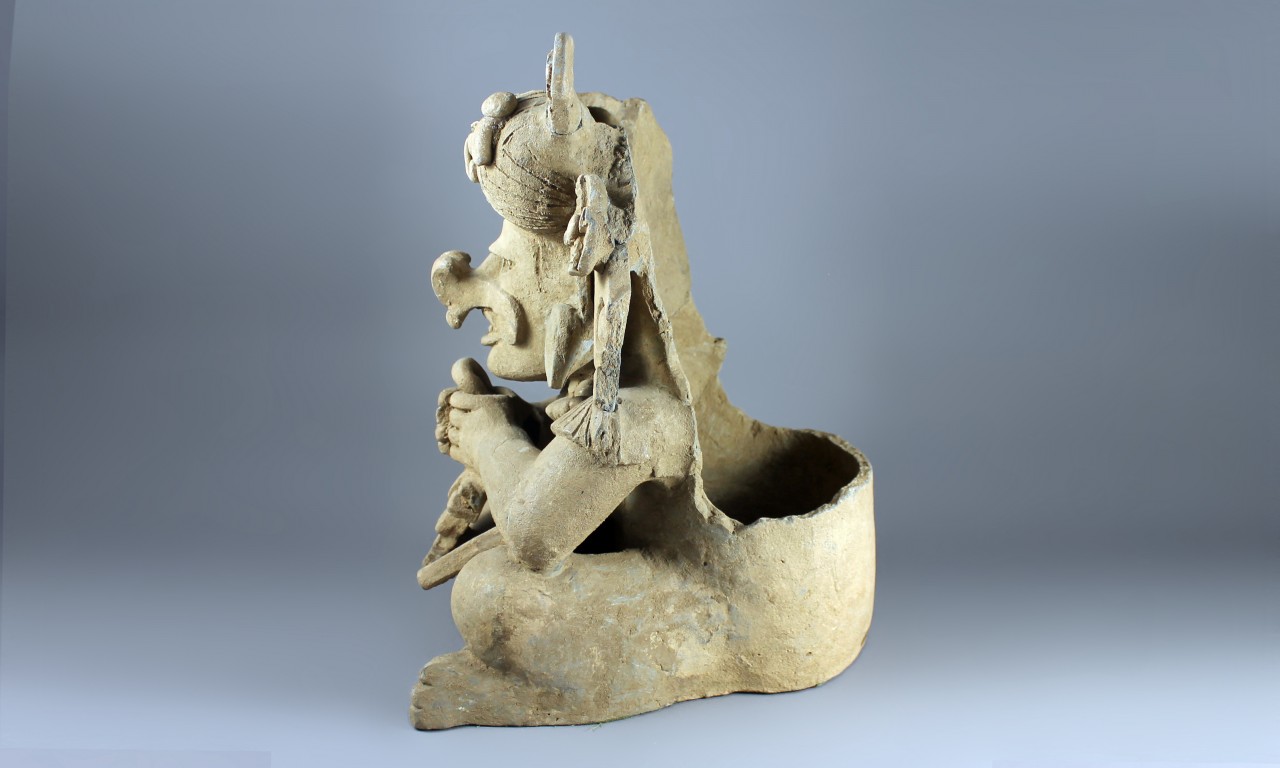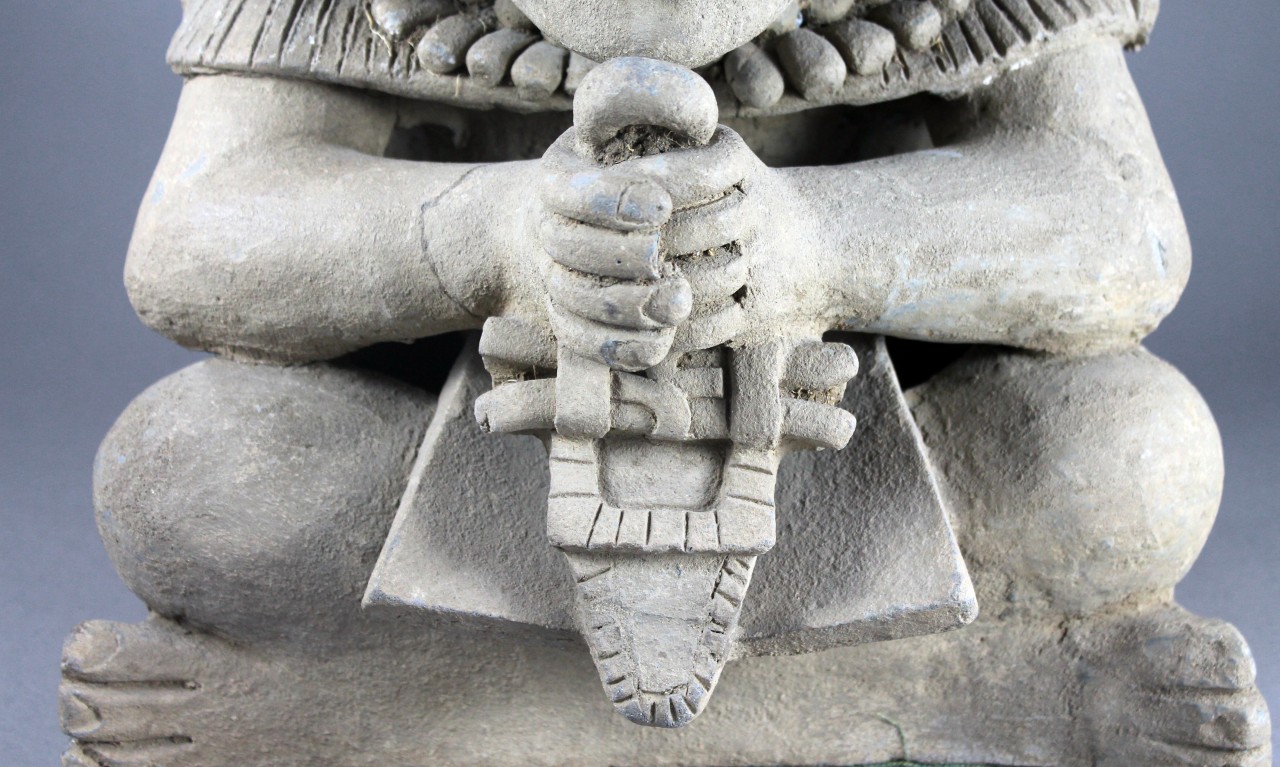2002 North Main Street
Santa Ana, California 92706
TEL: 714.567.3600
Forms in Dimensions: Tamayo and Zapotec Sculpture
 |
| Detail of Seated Deity Figure, 300-600 AD Zapotec culture; Mexico Ceramic; 14 1/2 x 10 in. 2000.56.7 The Dr. Eli B. and Aimee Cohen Memorial Collection |
Universes of Meaning
This week marks the opening of Dimensions of Form: Tamayo and Mixografía, an exhibition primarily about a series of three-dimensional prints made by Rufino Tamayo, one of the most influential Mexican artists of the 20th century, and Luis Remba, a master print technician and engineer. The exhibition primarily focuses on the collaboration between Tamayo and Luis Remba, but also looks at the body of prints through several lenses, including an oft-discussed facet of Tamayo: his indigenous and European ancestry. In the early and mid 20th Century, critics often attributed an almost innate flow of inspiration from Tamayo’s Zapotec forefathers into his works, but as we explore in the exhibition both Tamayo’s inspirations and the meaning we can draw from his works are immensely complex. This post pays homage to that discourse by looking at a Zapotec sculpture from the Bowers Museum’s collections.
 |
| 2000.56.7 The Dr. Eli B. and Aimee Cohen Memorial Collection |
Calendrical Meaning
This figure is highly ornamented, with what would have originally been a depiction of a feathered headdress, a beaded necklace, ear spools and a nose covering that has led some academics to describe these sculpture as being hawk-like in appearance. Draped around his shoulders is a decorative band and a triangular loin cloth falls over his crossed legs. In his hands the figure holds the rope handle of a bag of incense. A double bar design seen just under the hands is like the one on headdress above the forehead; both symbols, among others found throughout the headdress, likely represent or relate to Zapotec calendar dates and names. The complex iconography seen in this sculpture shows Zapotec art to be immensely rich in detail— a characterization that would in some ways be contrary to the perception of pre-Hispanic artwork when Tamayo encountered it in his career while working as the head of the Department of Ethnographic Drawing at the Museo Nacional de Arqueología, Mexico City.
 |
| Side view of 2000.56.7 The Dr. Eli B. and Aimee Cohen Memorial Collection |
Multiple Editions
Front-facing images of this object do not betray that it is a vessel, with the entire rear of the figure being a cylindrical vase that originally would have extended to the height of the figure’s head. Unfortunately, prior to its acquisition by the Bowers, both the upper lip of the rear vase and the crown of the figure were broken. Although named and referred to as an urn in its archeological documentation, it is important to note that these types of highly decorated vessels have never been found to hold human remains. Instead bits of jade, snail shells, obsidian and occasionally the small bones of birds have sometimes been found inside or near the vessels. Almost all figures on Zapotec urns are human in form and represent gods or humans dressed in elaborate costume and headdress to mimic the appearance of the gods. Usually the figure is in sitting position with hands on knees but other variations of postures, hand positions, overall size and proportions exist. Because the Zapotecs used molds to create the urns it is not uncommon to find exact duplicates at excavation sites.
 |
| Detail of 2000.56.7 The Dr. Eli B. and Aimee Cohen Memorial Collection |
Identity
An important aspect of Dimensions of Form: Tamayo and Mixografia is Tamayo’s complex relationship with both his ethnic and cultural identity. Despite critics and scholars being quick to emphasize Tamayo’s indigenous heritage, the artist recognized both his Zapotec and European roots:
At the same time, pre-Hispanic icons appear in many of Tamayo’s works. In Dimensions of Form, prints like Estela (Stela) and Quetzalcoatl directly reference this subject matter, while small details of many prints can visually be compared to other prints in the exhibition. For example, in many of his prints, the digits of his figure’s hands are of equal length, similar to what can be seen in this sculptural figure. For a broader perspective on these relations, when you get the chance to visit the new exhibition be sure to take a quick trip down the hallway to our Ceramics of Western Mexico and explore some of these parallels.
Text and images may be under copyright. Please contact Collection Department for permission to use. References are available on request. Information subject to change upon further research.

Comments